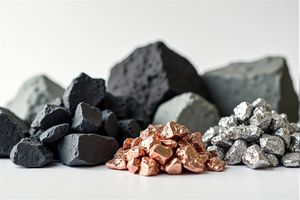Barrier Films Market size is forecast to reach US$4.5 billion by 2027, after growing at a CAGR of 5.2% during 2022-2027. Barrier films are flexible films that are meant to act as barriers to prevent oxygen, water, light, and other gases from entering or exiting a product’s packaging. The unique properties of barrier films compared to conventional films such as resealable zippers and sliders, faster machining speed, increased heat tolerance, extended shelf life, and others is making it a preferred material for packaging application. Aluminum oxide sustainable barrier coatings are highly employed in packaging barrier films. Some widely used barrier films include biaxially oriented polypropylene, polyamide, and ethylene vinyl alcohol due to their excellent moisture barrier properties. Increasing applications of barrier films in food and beverage product packaging and growing demand for barrier films in the pharmaceutical industry are boosting the demand for the market in the forecast period.
COVID-19 Impact
Currently, due to the COVID-19 pandemic, some end-use industries like the electrical and electronics, personal care, and home care industries were slightly impacted where a decrease in production and consumption was observed. Due to social distancing policy, most of the manufacturing plants were shut down. But, with an increase in the number of COVID patients, there was an increasing demand for healthcare, food and beverage packaging during the epidemic as a precautionary measure to prevent the covid virus infections to many other people, where the barrier films played a major role. And since the food products, retail stores, and healthcare products are often packaged, there was an increasing demand for barrier films packaging materials during the pandemic, which accelerated the demand for barrier films market growth in 2020 amid coronavirus. Due to supply chain disruptions like delay in reaching of raw materials or non-arrival, disrupted financial flows, and rising absenteeism among production line staff and employees, OEMs were forced to function at zero or partial capacity, disoriented the supply-demand chain of the barrier films market in 2020. The governments of various countries are expected to increase their healthcare and pharmaceutical spending over the coming years to fight similar situations in the future. This is expected to ensure a positive demand for various barrier films products.
Barrier Films Market Segment Analysis – By Product Material
The polyethylene (PE) segment held a significant share in the barrier films market in 2021 and is forecasted to grow at a CAGR of 5.8% during 2022-2027. Polyethylene barrier films are a type of packaging film that is widely used in food and beverages to extend the shelf life of the food as well as protect the food products from numerous external influences like moisture, oxygen, and other gases. Also, polyethylene barrier films hold the main use in several other products' packaging as well. Barrier films consist of two layers type which are multiple layers and single layers. Polyethylene barrier films help to prevent quality deterioration, so these films are used to put pharmaceutical products under specific environmental conditions for increased shelf life. Hence, due to all the above-mentioned factors and advantages, polyethylene (PE) barrier film is dominating and expected to dominate the barrier films market during the forecast period.
For More Information About Barrier Films Market @ https://www.industryarc.com/Research/Barrier-Films-Market-Research-510112
Report Price: $ 5900 (Single User License)
Barrier Films Market Segment Analysis – By Technology
The multi-layer barrier films segment held a significant share in the barrier films market in 2021. The multi-layer barrier films avoid the exchange of gases across packaging and increase the life of pharmaceutical drugs. Multi-layer barrier films are also used in the agriculture industry to protect the filling goods from oxidation, microbial infestation, and vitamin loss. In agriculture, the multi-layer barrier films also reduce the fumigants in crop production and emissions of volatile pesticides. Also, multi-layer films provide a strong moisture barrier to the soil for the cultivation of vegetables and fruits that undergoes fumigation or sterilization process. Increasing applications of multi-layer barrier films in the food and beverages product packaging, pharmaceutical, and agriculture industry are the main drivers for the demand for multi-layer barrier films.
Barrier Films Market Segment Analysis – By End-Use Industry
The food and beverages segment occupied the largest share in the barrier films market in 2021 and is forecasted to grow at a CAGR of 8.3% during 2022-2027. Barrier Films like polyethylene, polyethylene terephthalate are approved food-grade plastic, that is unreactive material that doesn’t react with the food contents of the material. This makes them fit for food and beverage packaging materials. There are no harmful chemicals, additives, or goods that can be consumed by using polyethylene film-packed food and beverages. High-density polyethylene (HDPE) is the most widely used polyethylene material for the food and beverages packaging industry. Barrier films are high solvent-resistant, flexible and strong, making them perfect for packaging applications in several end-use industries like automotive, food and beverages, chemical, pharmaceuticals, and others. In the food and beverages industry, barrier films are used in the manufacturing of bags, pouches, wrappers, boxes, containers, and food packaging in restaurants. For instance, in 2020, as per the Ministry of Economy, Trade, and Industry of Japan, 2.4 million metric tons of plastic - polyethylene films and sheets were processed. This huge production quantity shows the high demand and consumption of barrier films, and the packaging applications in various regions and end-use industries. Thus, this continuous growth has made barrier films the largest and fastest-growing market during the forecast period. Due to the aforementioned factors, the packaging in the food and beverages industry is predicted to drive the market growth for the barrier films over the forecast period.
Barrier Films Market Segment Analysis – By Geography
The Asia-Pacific region held the largest share in the barrier films market in 2021 up to 39%, as it is one of the fastest-growing economies, and has become one of the biggest production houses in the world. China being one of the major manufacturing sectors, alone contributes to the barrier films market of this region. According to the Sea-Circular Organization, the packaging industry in China is predicted to record a CAGR of 13.5% during the forecast period (2020-2025). Barrier films are experiencing a sturdy growth in the Asia-Pacific region mainly due to their increasing consumption and growth of various end-use industries in countries like China, India, and Japan. According to the Indian Brand Equity Foundation (IBEF), in August 2021, the pharmaceutical industry in India had an increased growth percentage of 17.7% annually, which has increased from 13.7% in July 2020. According to Invest India, Indian pharmaceuticals ranks “3rd worldwide for production by volume and 14th by value.” According to the United States Department of Agriculture, China consumed around 74 million metric tons of pork, beef, and poultry, approximately twice as much as the United States, and the total China meat supply in 2022 is expected to cross 79 million metric tons, showing a 7% rise from the prior forecast. The demand for packaging of these meat products is expected to drive the market in the region. According to the Japan Ready-Made Meal Association, total sales in 2017 were US$89.78 billion, and in 2018, total sales were US$92.12 billion, which was 1.9% higher than the previous year. This increasing demand and consumption of barrier films from various end-use industries as stated above are expected to bring a significant impact on the demand for the barrier films market within the Asia-pacific region over the forecast period.
Barrier Films Market Drivers
Growing demand for barrier films in pharmaceuticals
There is a constant surge in demand for barrier films from pharmaceuticals and healthcare facilities as it is used in the packaging of many useful products like medical devices, medical implants, pharmaceutical consumables, medicine bottles, syringes, and others. Polyethylene barrier films are widely used in many applications because of their excellent performance values such as low density, easy recyclability, diverse processability, and most importantly cost-effectiveness. The growing investment in healthcare and pharmaceuticals is strengthening the barrier film industry. According to Invest India, India occupies 20% of the global share in pharmaceuticals, having a current value of US$41.7 billion, and is expected to reach US$65 billion by 2024 and to US$120 billion by 2030. According to the Australian Department of Health, the Australian Government made US$9.8 billion worth of new investments in 2021, after spending US$81.8 billion in 2019-2020 for a new era of better health care, and 16.3% of the Australian government’s total expenditure is contributed for healthcare and pharmaceuticals. According to the US National Library of Medicine (also known as NCBI), the global pharmaceutical industry has been growing at an annual rate of around 5.8%. According to the European Federation of Pharmaceutical Industries and Associations, in 2020, the global pharmaceutical market was worth US$1,077,856 million with North America (the USA and Canada) holding the first largest portion of the global pharmaceutical revenue by 49.0% of the share, and secondly being Europe with 23.9% share, followed by China and Japan. Thus, all the above-mentioned statistics showing the constant growth in the pharmaceutical industry from different regions will markedly fuel the barrier film market growth.
Increasing retail sales is bolstering the growth of barrier films industry
Barrier films are extensively used in retail stores of products such as foods, home care, personal care, electronics, and many more, due to their low cost and ease of use. Increasing retail sector sales are expected to increase the demand for packaging using barrier films. For instance, according to the Food Export Association of the Midwest USA and Food Export USA, the retail sector sales in Brazil amounted to US$84 billion, and the foodservice purchases from the local food processing industry accounted for US$26 billion, an increase of 12.7% and a contraction of 24.3%, respectively. Increasing requirements for packaging of ready-to-eat meals, meat, fruits, and vegetables available in retail food stores, and the growing concerns from producers, retailers, and consumers to increase the product’s shelf life and to reduce wastage of packaging material, as well as the rising preference to keep the foods fresh for longer period of time, has increased the demand for barrier films. Thus, the increasing retail stores and product sales globally have resulted in the demand for the packaging of various products, which is driving the barrier films market.
Direct Purchase @ https://www.industryarc.com/purchasereport.php?id=510112
Barrier Films Market Challenges
Susceptibility to degradation
Barrier films are susceptible to oxidative degradation when it suffers from high temperatures. Some barrier films’ product materials are unstable and tend to change their properties when exposed to UV rays or extreme temperatures. This leads to the scaling of the films, and their mechanical and tensile strength is changed. When polyethylene-based multilayer films with barrier EVOH and PA layers were tested, a photodegradation in the multilayer films was observed, due to which these barrier films experience a shorter life span under such extreme conditions. The presence of pinholes and cracks in the coating layers shows the degradation effect on barrier films. Due to such results, experts and scientists suggest that the possible use of barrier layers in agriculture and food packaging using multilayer barrier films should consider the detrimental effect of these layers in their behaviors and durability. Hence, such a disadvantage would act as a restraint for market penetration.
Barrier Films Industry Outlook
Technology launches, acquisitions, and R&D activities are key strategies adopted by players in this market. Barrier Films top 10 companies include:
1. Sumitomo Chemical Co., Ltd
2. ProAmpac LLC
3. Berry Global
4. Dupont Teijin Films
5. Raven Industries
6. Cosmo Films Ltd.
7. Uflex Ltd
8. Amcor Limited
9. Toppan Prnting Co., Ltd.
10. Sealed Air Corporation.
Recent Developments
In March 2020, Berry Global Inc. invested US$30 million for upgrading and adding new lines to the company’s nine North American locations. This investment was to increase the company’s production capacity of ultra-high performance stretch films. And, this investment was done to cater to the growing demand for stretch films and to fortify their position in the North American market.
In August 2020, Raven Industries Inc. developed a new product in its plastic film line called the BioFlex I-series. This latex-free film is used in personal protection equipment (PPE) and is used to prevent hospital-acquired infections (HAIs) in hospitals and laboratories. This product was launched to strengthen the company’s product portfolio.
In July 2020, Raven Industries Inc. signed a contract worth US$5 million with the Federal Emergency Management Agency (FEMA) of the United States to supply film-based medical products that include pouches and body bags, to support Covid-19 response. This agreement is looked upon to create a sustainable demand for its film-based products.
Key Takeaways
Asia-Pacific is the largest consumer of barrier films globally in terms of value and volume, owing to the increasing consumption for packaging applications in various industries such as food and beverages, pharmaceuticals, and others.
China is one of the world’s largest production sites of barrier films in the world.
The food and beverage segment in the end-use industry held the largest share in the market, and it is expected to grow during the forecast period.
Growing technological advancements and new types of barrier films being invented are expected to cater to the increasing demand for barrier films and that is expected to act as a market opportunity during the forecasted period.
The food and beverage industry dominates the market and provides higher stability compared to other industries making it a dominating segment in the global barrier film end-use market.
One of the major factors that are driving the growth of the barrier films market is the increasing need and production of packaging materials, and recently more due to the covid pandemic
Relevant Reports
Industrial Films Market
https://www.industryarc.com/Research/Industrial-Films-Market-Research-500234
For more Chemicals and Materials Market reports, please click here
About IndustryARC: IndustryARC primarily focuses on Cutting Edge Technologies and Newer Applications market research. Our Custom Research Services are designed to provide insights on the constant flux in the global supply-demand gap of markets. Our strong team of analysts enables us to meet the client research needs at a rapid speed, with a variety of options for your business. Any other custom requirements can be discussed with our team, drop an e-mail to sales@industryarc.com to discuss more about our consulting services.
Media Contact
Company Name: IndustryARC
Contact Person: Mr. Venkat Reddy
Email: Send Email
Phone: (+1) 970-236-3677
Address:Madhapur
City: Hyderabad
Country: India
Website: https://www.industryarc.com/






